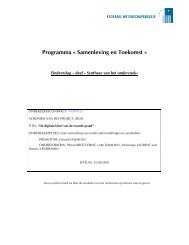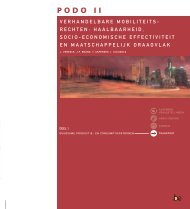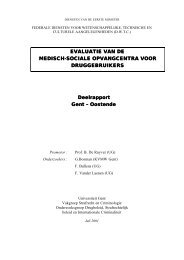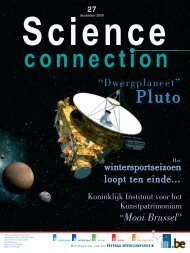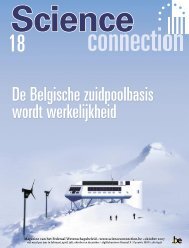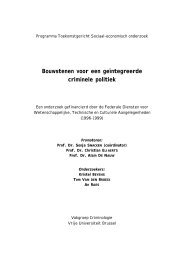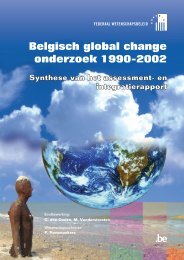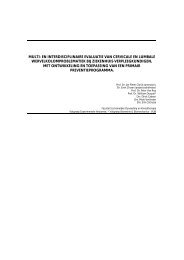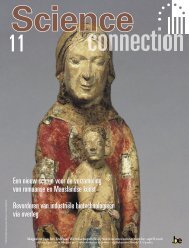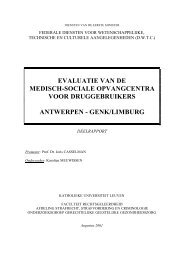chapter 3 inventory of local food systems
chapter 3 inventory of local food systems
chapter 3 inventory of local food systems
Create successful ePaper yourself
Turn your PDF publications into a flip-book with our unique Google optimized e-Paper software.
Project CP/59 - “Instruments and institutions to develop <strong>local</strong> <strong>food</strong> <strong>systems</strong>”<br />
cooperatives is healthy in terms <strong>of</strong> continuously questionning the basis and rules for<br />
collaborating. In this case, how financial risk is shared is a particular source <strong>of</strong> tension.<br />
The fourth dilemma is whether to outsource or do it yourself. The members hold the<br />
independence <strong>of</strong> the cooperative as very important. This was the very reason <strong>of</strong> its<br />
establishment: marketing quality <strong>food</strong> independent <strong>of</strong> the mainstream retail system. As a<br />
result, the cooperative has a tendency to outsource as little as possible and to be<br />
involved in every step <strong>of</strong> the supply chain. However, this <strong>of</strong>ten conflicts with available<br />
time, such that, in practice, some work has to be outsourced.<br />
4.3.3. Case C: Associative economy shop<br />
Case C is a shop working according to the principles <strong>of</strong> the associative economy since<br />
1988: production and consumption are brought together directly by a mediator, thus<br />
avoiding unnecessary production, transport and stocks. The shop acts as a mediator<br />
between consumers and producers. Customers predict their demand twice a year. The<br />
shop then relays this information to its suppliers, such that the latter can adapt their<br />
production planning. Prices should cover the production costs <strong>of</strong> the suppliers and the<br />
mediating costs <strong>of</strong> the shop. The latter are covered by a fixed fee, paid monthly to the<br />
shop. As a result, there is a contractual arrangement between the consumer and the<br />
shop. Currently, there are contracts between the shop and its suppliers for only a limited<br />
number <strong>of</strong> products. Products are predominantly organic and even biodynamic. We<br />
have identified three sets <strong>of</strong> dilemmas for case C.<br />
The first dilemma is grounded in the ideological (anthroposophic) nature <strong>of</strong> the shop<br />
that gives rise to a tension between the (mainstream) market and an ideology <strong>of</strong><br />
sustainability, and thus similar to the first dilemma <strong>of</strong> case A that also strives to work<br />
according to anthroposophic principles. The dilemma is felt, for example, when<br />
suppliers are not willing to deliver when the requested quantities are too small.<br />
The second dilemma is the dilemma <strong>of</strong> keeping the initiave ‘intimate’ or upscaling it to<br />
have a greater impact. With intimacy we mean having strong and trustworhty<br />
relationships with the consumer that shares the same ideology. However, as the number<br />
<strong>of</strong> consumers sharing the same ideology is rather small, the question rises whether more<br />
people can be reached by putting less emphasis on the ideological principles <strong>of</strong> the<br />
shop.<br />
The third dilemma is the dilemma that is common for all cases: the tension between the<br />
individual and the collective. In this case, this is felt by the lack <strong>of</strong> balance <strong>of</strong> the<br />
collective. The initiative is highly focused on the shop and its relationships with a group<br />
<strong>of</strong> consumers sharing the same ideology, and less on its relationships with producers. In<br />
fact, there is no relationship whatsover between the consumers and the producers.<br />
4.4. Interventions<br />
The intervention took the form <strong>of</strong> a vision workshop in all three cases. This was because<br />
in all three cases the researchers diagnosed a lack <strong>of</strong> shared vision as the major<br />
SPSD II - Part I - Sustainable production and consumption patterns - Agro-Food 64



